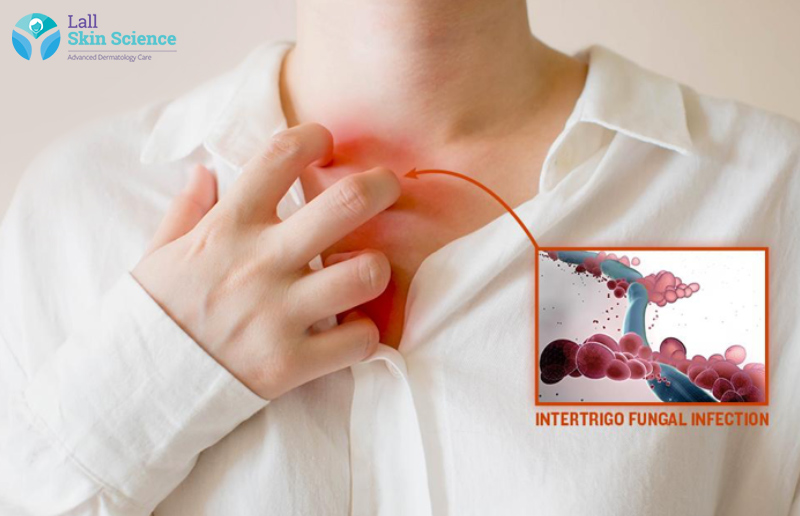Fungal infections are common in hot and humid summer time. They cause immense discomfort and can easily be avoided. Dermatologist Dr. Seema Oberoi Lall tells us how.
The summer season may be something to look forward to after a chilly winter and spring, but it ushers in its own share of skin problems. The soaring temperatures cause us to perspire and when the skin remains damp for long periods of time rubbing against each other, what develops is a fungal infection called Intertrigo.
Calling in the experts
Dr. Seema Oberoi Lall, Consultant Dermatologist at Lall Skin Science shares her expert knowledge on this skin ailment and how we can easily avoid it through simple measures.
Her foremost advice is, “Don’t neglect it. We often take these minor skin rashes lightly, neglecting them till they become more severe and problematic.”
Intertrigo is fairly common in people of all age groups, including children. Those who work in hot, humid conditions or are obese, are more prone to it. The good news is, it is totally preventable and treatable.
Body parts that are most commonly affected
- Armpits
- Behind the knees
- Inner thighs
- Groin
- Below the breasts
- Underside of the belly
- Creases on the neck
- Waist
- In between the fingers and toes
- Diaper area in babies
Symptoms to look out for
The most common symptoms of Intertrigo, according to Dr. Lall are redness and itching of the affected area. Further, your skin may develop cracks that become wet and oozy. If there are pus-filled boils in the margins of the affected area, it signifies yeast infection. Another variant of skin rash is Tinea Cruris, which is caused by a fungus called Dermatophyte. Here, the skin may not be wet or oozy, but will have red centres with dry and scaly borders.
The treatment
“Firstly, it is important to understand that not all skin rashes can be termed as Intertrigo or Tinea Cruris. Your doctor is the best person to determine the type of rash on your body and suggest the most effective method of treatment,” says Dr. Lall.
She goes on to share her course of treatment. “Normally, I prescribe antifungal creams and tablets, depending on my patient’s condition. Some anti-allergic medicines can also be prescribed for additional relief.”
Dr. Lall warns against the use of steroid-based topical creams like Betnovate, Tenovate, Lobate, Quadriderm, Fourderm, etc, without a doctor’s prescription because they might provide temporary relief, but would do nothing to cure the infection. Furthermore, these creams make the skin more sensitive.
Precautions that help prevent infection
Medication may relieve you of the discomfort and cure the infection, but some simple precautions can help prevent the condition altogether, ensuring healthy skin throughout the year. Here are a few useful dos and don’ts recommended by Dr. Lall:
Dos:
- Maintain personal hygiene
- Keep your skin dry at all times
- Cleanse all skin folds with soap while bathing
- After bathing, dry all skin folds thoroughly, especially in between the toes.
- Wear only loose, airy cotton clothes
- Use a towel or a tissue paper to pat dry sweaty areas
- After gym or a workout session, take a shower and clean yourself thoroughly
- Keep the diaper area clean in a baby, and change the diaper frequently
DON’Ts:
- Avoid using oil in the affected areas
- Don’t itch or rub the affected area
- Avoid nylon and synthetic clothes as much as possible
While we cannot keep our bodies from perspiring in hot weather, we can try to stay clean and dry as much as possible. And more importantly, not neglect the onset of an infection to be able to nip it in the bud.
Just as the process of respiration is crucial to stay alive, our skin – which is very much a part of the body – also needs to breathe to stay healthy and supple. Personal hygiene can go a long way in ensuring this.

